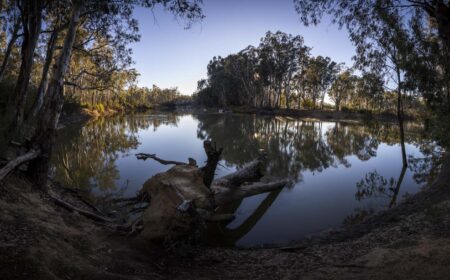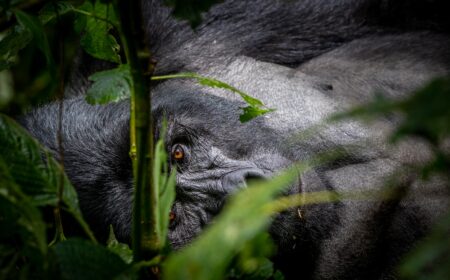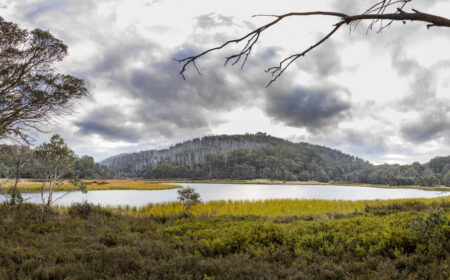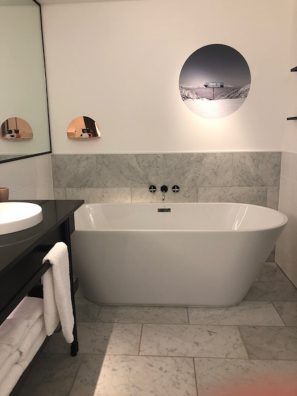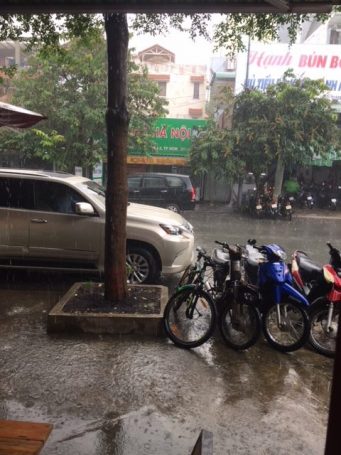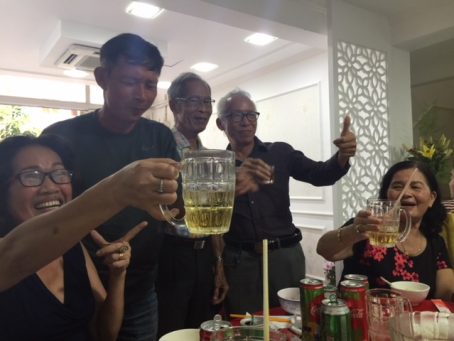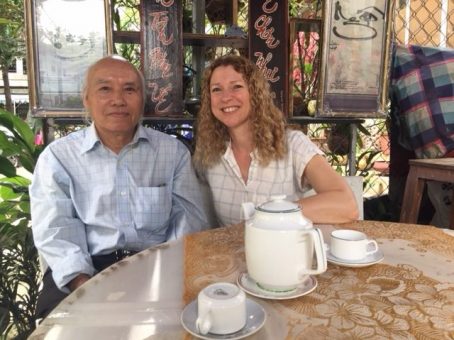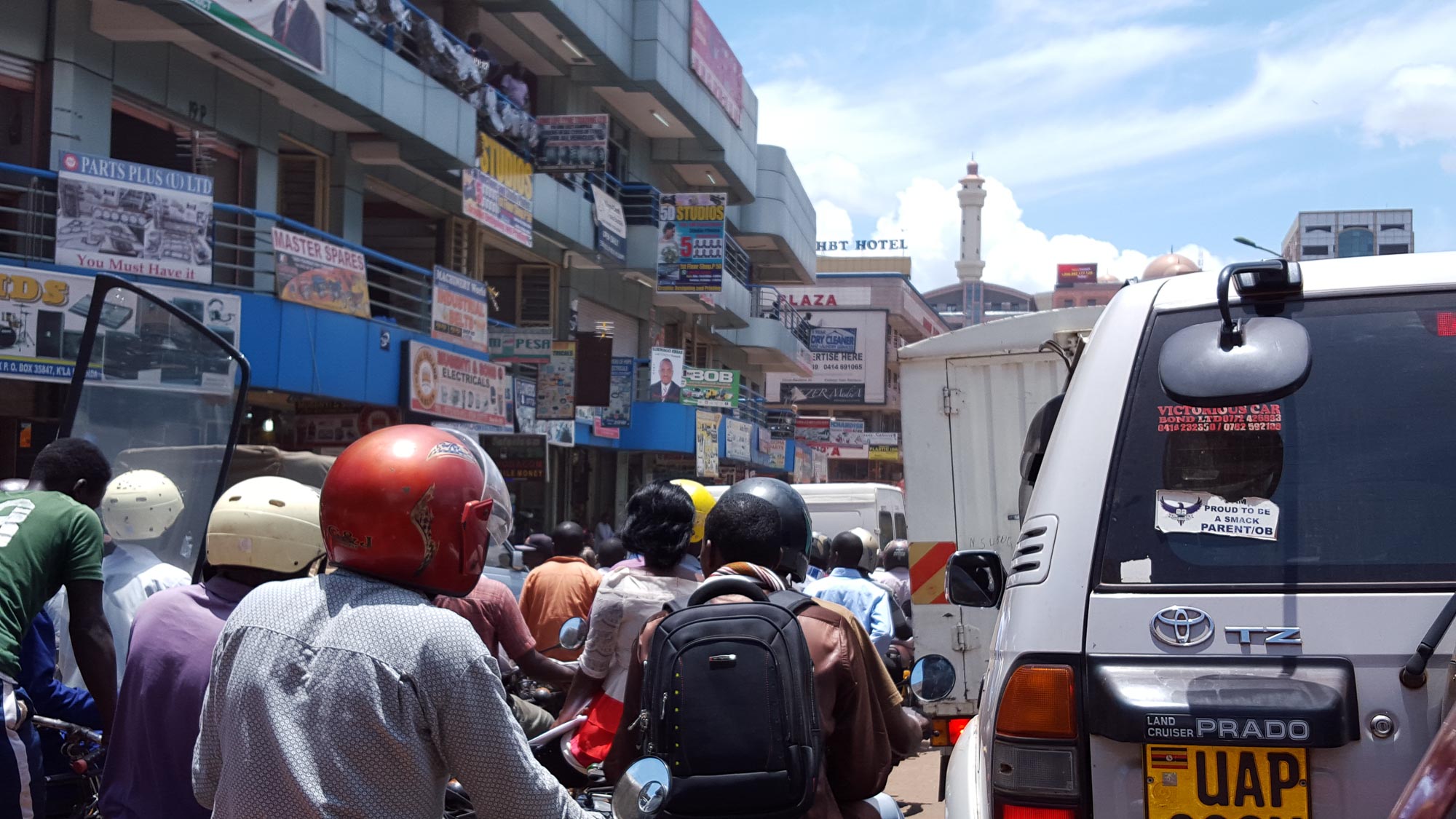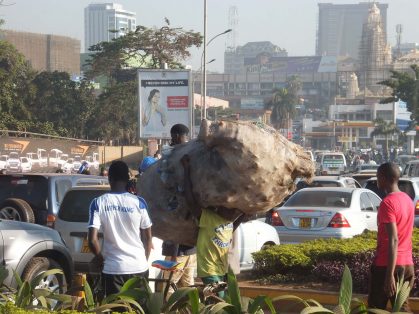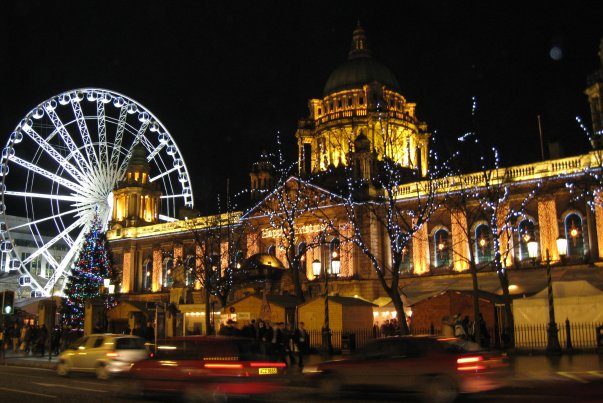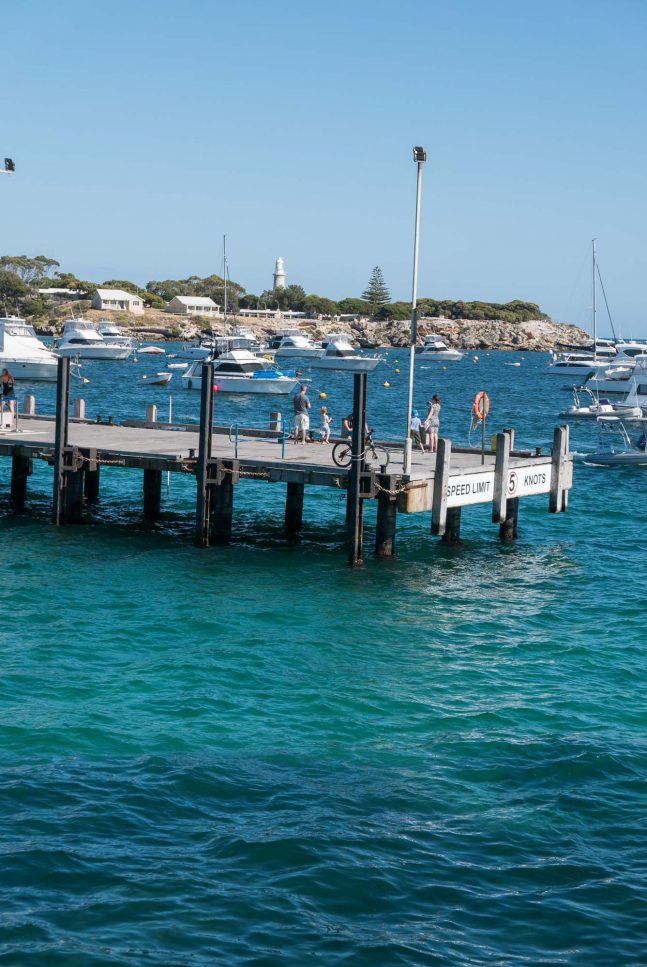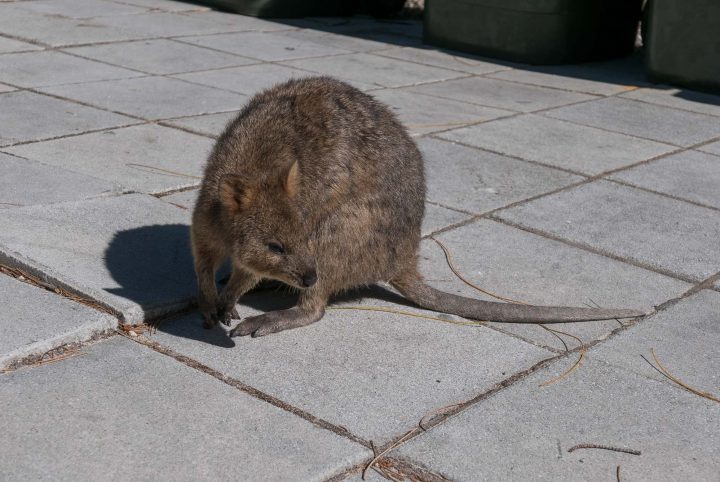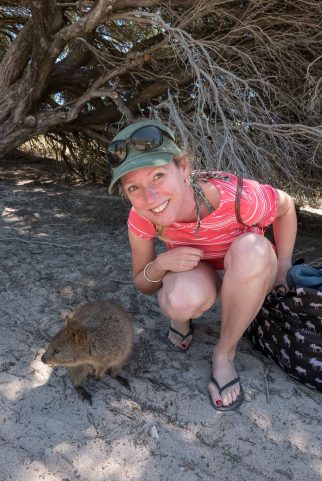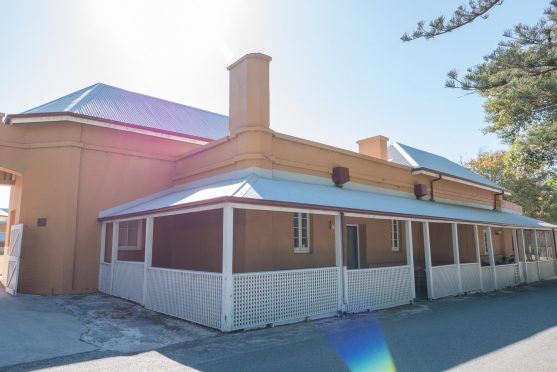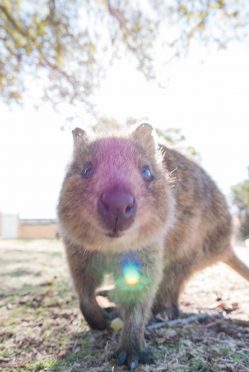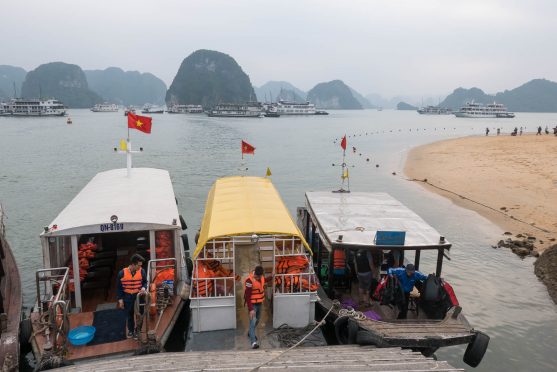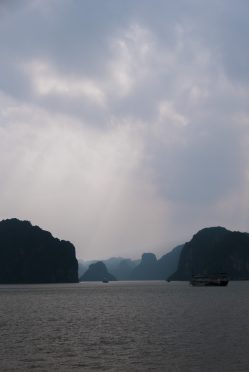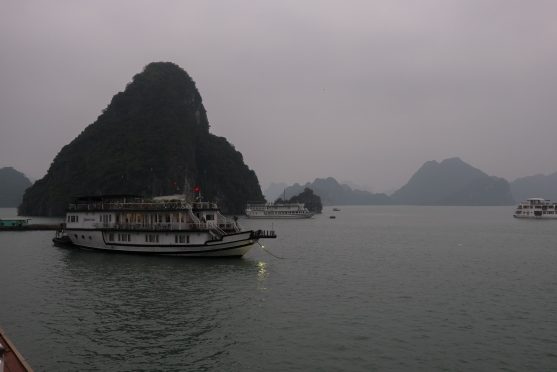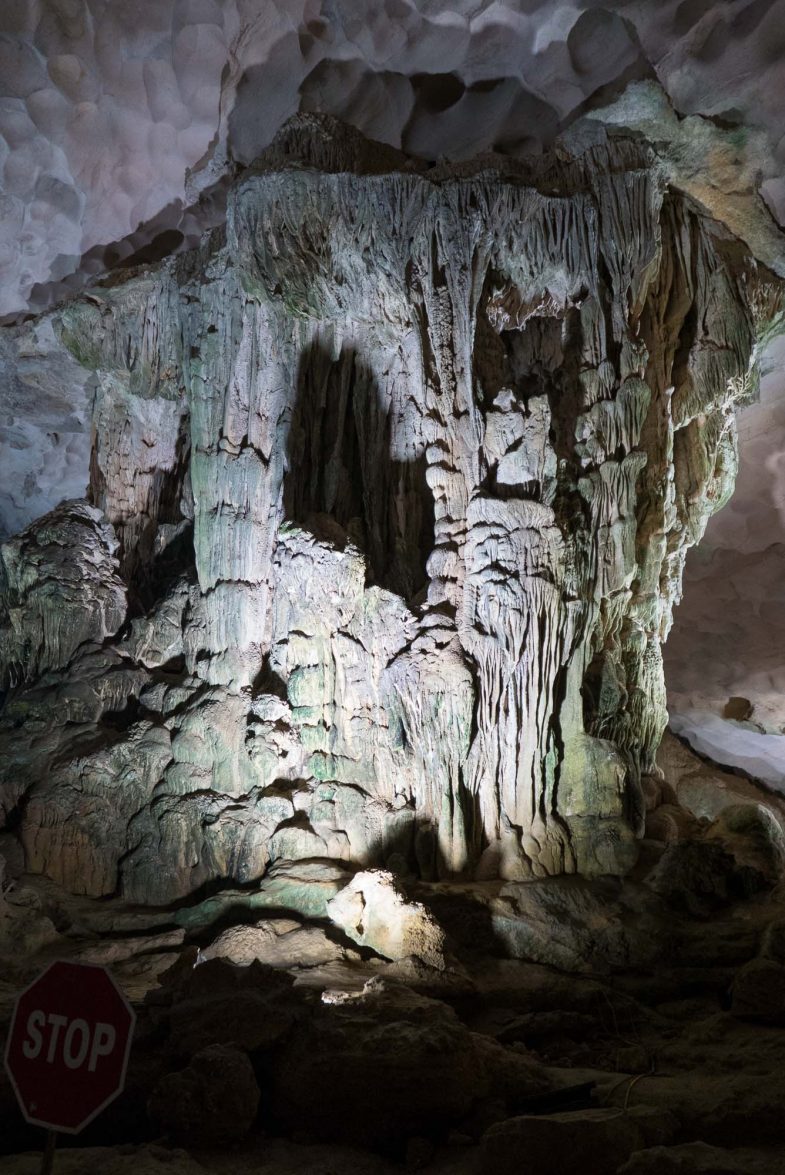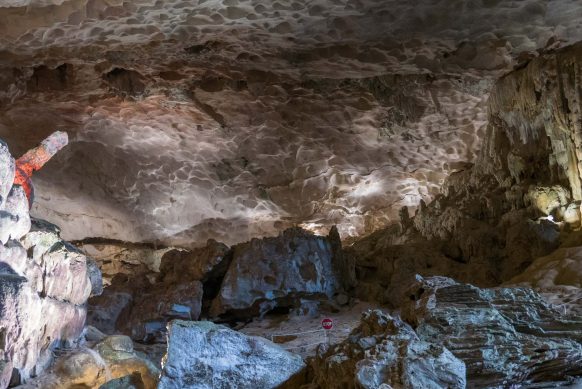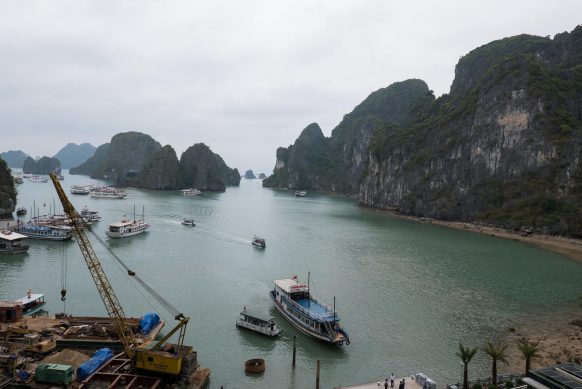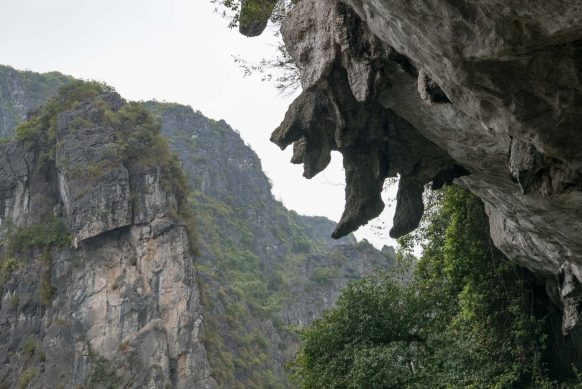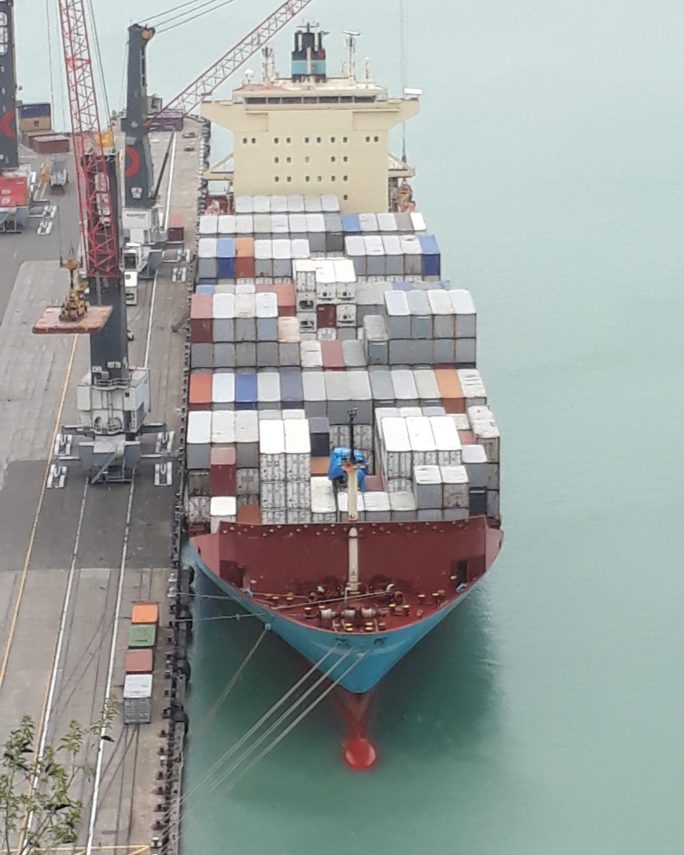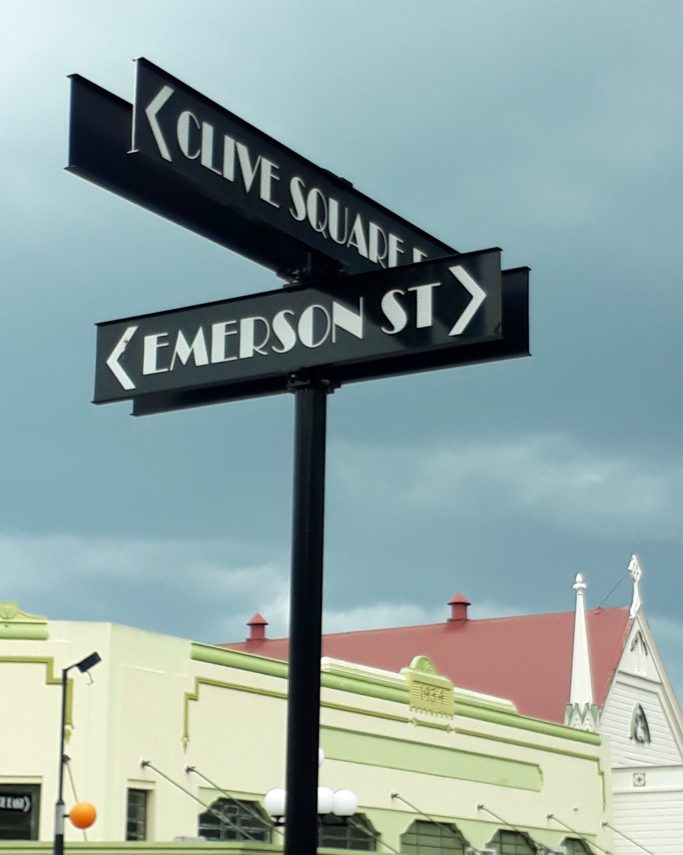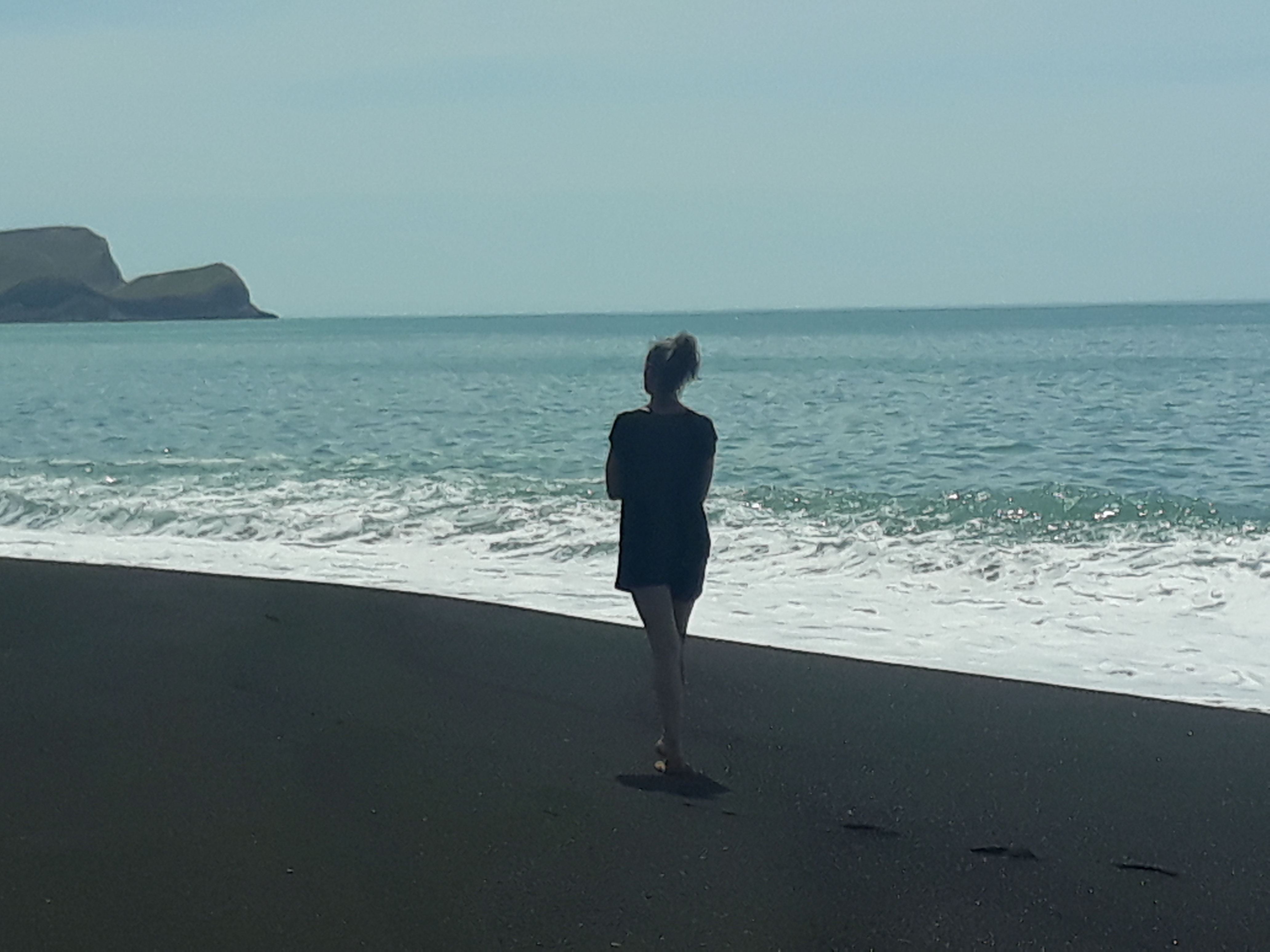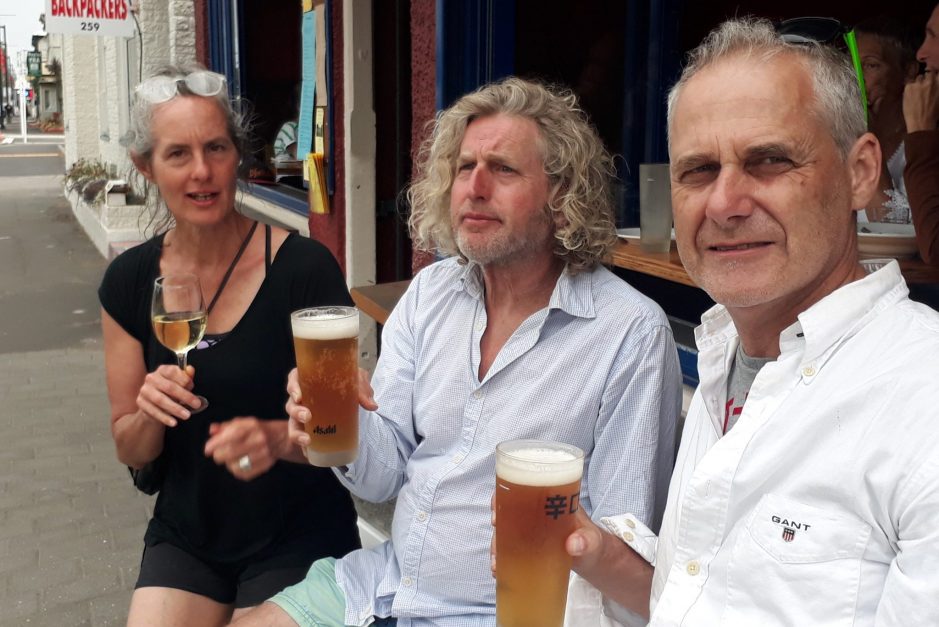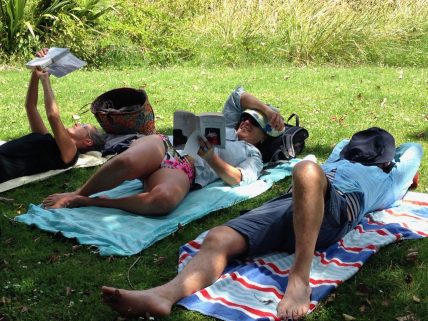Stunning scenery at every turn – must be New Zealand
A train ride in the world’s top 10, ancient rock formations and breathtaking scenery? And all within a few hours flight of Australia? In our latest You’ve Been Where post Mark Franks takes us on amazing tour of New Zealand’s South Island. And thanks to Mark, we’re now planning a trip back there just for that train journey!
Who are you and what do you do for a living?
Hi, I’m Mark Franks and I’m a 48-year-old journalist living in a regional city called Burnie on the north-west coast of Tasmania. I have had more than 30 years’ experience in the newspaper industry (even I find that hard to believe) and work for Fairfax Regional Media as part of their editorial production hub. As a production journalist, I am part of a 30-strong team, spread out across the country, who are responsible for ensuring more than 150 regional publications make it to the press on time each week.
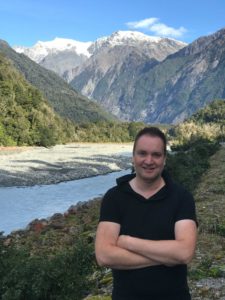
Where is home?
I have always called Burnie or Tasmania home and while I spent much of my earlier life doing all the responsible stuff like buying houses, paying off a mortgage and pursuing a career, it hasn’t really been until I reached my 40s that I decided I would like to see more of the world we live in. I still enjoy coming back to Tassie after my adventures and I appreciate how lucky I am to live in a very beautiful part of the world.
Where have you been and when did you go?
I spent a week exploring New Zealand’s South Island in May.
Who did you travel with?
My two best mates, Marcus and Joel. Marcus is a registered nurse and works in the emergency department at the hospital in Burnie, Joel is a public servant and is based on the Gold Coast. Both say their jobs are much more highly skilled and demanding than my own!

What were the highlights of your trip?
Where do I start? So many highlights in a short space of time.
The train journey between Greymouth and Christchurch is hailed as one of the top 10 train journeys of the world and I can see why.
The scenery was truly breathtaking and the train was a special way to appreciate the sheer beauty of the South Island in total comfort. It even included passing through a couple of tunnels that had been carved into the majestic mountains. One of us may have found the pitch-black darkness slightly terrifying, but that can stay a secret among friends.
It was also fun exploring the Pancake Rocks and Blowholes at Punakaiki. The beauty of these ancient formations is inspiring and provides some awesome photo opportunities.
The historic gold-mining town of Arrowtown is definitely worth a visit. For those with a sweet tooth, The Remarkable Sweet Shop is a picture-perfect old-fashioned lolly shop and was certainly popular on the day we called in.
We loved the vibe in Queenstown. It’s a bustling tourist city with a prosperous feel to it and its size isn’t intimidating. There’s also quite a few shops and eateries to explore.
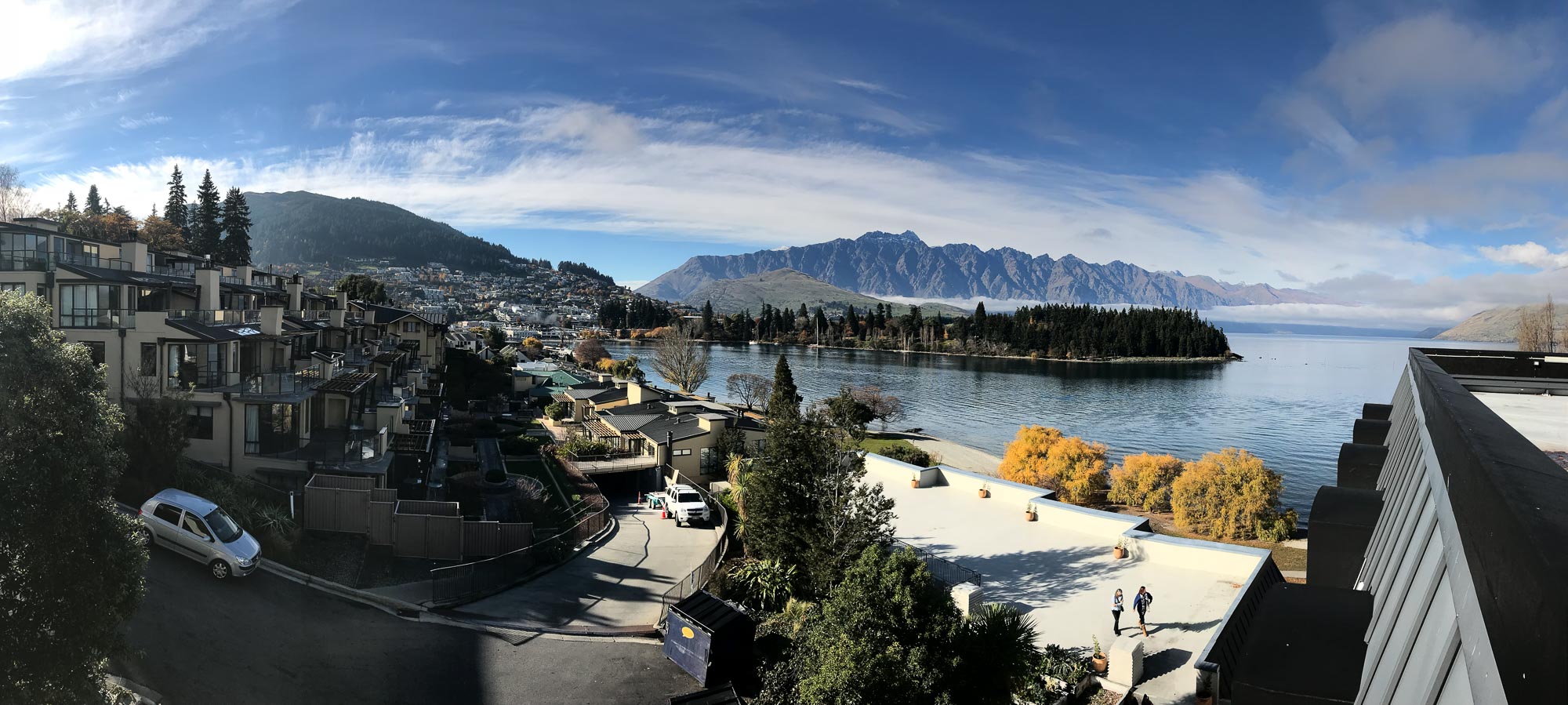
We spent a day a Lake Tekapo and it’s a visually stunning place. In fact, the unique turquoise colour of all the lakes and rivers we encountered just added to the magic. We knew we were exploring somewhere special.
As far as accommodation goes, we were impressed with all our choices, but the stand-out would have to be the QT Queenstown. This boutique hotel only opened its doors in December and the only word to describe the room was ‘wow’! The bathroom especially was to die for. The cocktail bar and in-house restaurant were both superb. On the night we stayed, several chefs were preparing a broad range of delicious food and we could select from their offerings while having the opportunity to speak to them.
A close second was Peppers Bluewater Resort at Lake Tekapo. The view from our accommodation across the lake and small township was amazing.
What did you least like about your trip?
There was actually very little that was not to like, but probably the most disappointing was the four-hour each-way coach tour from Queenstown to Milford Sound, with lunch on board a cruise boat.
I should say it took Joel some convincing that this would even be a good idea to include in our itinerary after he and his parents endured a particularly arduous coach trip to the Grand Canyon a few years ago.
It’s iconic, I said. We can’t not do it!
So it was with some reluctance he agreed.
It made for a long day and while our driver was knowledgeable and friendly, the cruise was something of an anti-climax. Picture trying to even get a glimpse of world-class scenery through fogged-up windows and you get some idea where we are coming from.
Add to this that the boat ran out of sandwiches and we weren’t the happiest of campers.
The driver told us that some people have said to him the scenery on the actual journey to Milford Sound is actually more spectacular than the destination itself.
On this occasion, at least, I think he was right. And Joel remains dubious about coach trips
Do you have any funny stories from your travels?
Too many to mention. Marcus says everything was funny on the road trip. I’m still not quite sure what he meant by that.
What were the locals like?
Amazingly friendly. In all the accommodation places and eateries we visited, the service was spot on. There was never an eye roll or an, ‘oh great, we actually have to help these guys attitude’. New Zealanders seem to be very much aware how important tourism is to their economy and will often go out of their way to help you. One example of such genuine hospitality was the final night of our trip in Christchurch. We were looking for somewhere for dinner and one of the bartenders at our hotel went out of his way to recommend a nearby Thai restaurant, even drawing a map. We were impressed, even more so when the unassuming little café he recommended ended up serving some remarkably delicious Thai cuisine.
What was the food like?
Ahh the food. The South Island really is a foodie’s paradise. From our amazing first-night meal at the Commodore Hotel in Christchurch, none of us were left disappointed by both the quality and choice of dishes we experienced. As you would expect, there is often an abundance of lamb on the menu, and they certainly know how to cook and present it. There was also plenty on the menu for us to choose from at most places we ate at. With two of us coming from Tassie, we are often spoilt when it comes to food that showcases the best of fresh, local produce, but New Zealand certainly gives us a run for our money.

Did you learn anything about yourself or the world on the trip?
I half-jokingly told my mates at the start there was a defined temperature range that I could survive in. That is between 13 and 25 degrees. Anything beyond, and especially below these extremes, and we could find ourselves in trouble. The fact I managed to survive a particularly bleak day in Greymouth, with a temperature in the single figures, I still regard as a true test of stamina. According to my travel buddies though, yeah, not so much.
Would you recommend others travel here?
Definitely. For those looking for a low-fuss destination that is easy to get around, with some spectacular scenery virtually at every turn, New Zealand’s South Island should be your next must-see destination. You can be as outdoorsy as you like, but for those whose bucket list doesn’t include bungee jumping (yep, that was all three of us), there is still much to see, do and admire.
Do you have any tips for others thinking about travelling here?
Sit back and enjoy the ride. New Zealand’s South Island is incredibly easy to find your way around by car. And for those who can’t resist a good photo or social media opportunity (I travelled with two such people), be prepared to stop multiple times between each destination for that ‘pull over, I have to get that shot’ moment.
Been somewhere recently? We’d love to hear about it. Drop us a line or tell us about it below.
Join AllAbroad on Facebook, Instagram and Twitter for more travel chatter.
Lessons in trust and living like a local in Saigon
I’ve had a real lesson in trust this week and letting go of my “control freak” tendencies.
Since being in Vietnam on my great life swap experiment I’ve been used to getting around the frantic Ho Chi Minh traffic on the back of a motorbike via Grab, a company that works like Uber but offers various modes of transportation including motor bikes.
If you haven’t been on the back of a bike in Ho Chi Minh, it feels kind of like you’re in the middle of a swarm of bees, with bikes coming at you from all sides and a constant hum of motorbikes surrounding you. I’ve grown accustomed to that now.
Despite what you may think, I’m not really that adventurous, I have a strong sense of my own mortality and my life preservation is strong so getting on the back of a bike initially filled me with dread (but shhh, don’t tell anyone my little secret). Anyway, I got over the whole bike in crazy traffic scenario and am now quite used to zipping all over the place.
But this past week my Grab driver switched it up a notch.
It started raining on the streets of Ho Chi Minh, and when it rains here, it’s torrential, so as the first drops began to fall, my Grab driver pulls over and motions to me that we need to put our jackets on. After cloaking up, we hop back on the bike. But the thing is his wet weather gear is a two-person cover, so after I’m comfortably back in the saddle he pops the cover over my head.
So there I sat for the next 10 minutes driving through the streets of Ho Chi Minh, with my head bowed, hunched beneath a rain cover. I couldn’t see a thing, other than the road beneath my feet. But all around me I could hear the buzzing of the traffic.
And you know what? I stayed calm the whole time. I silenced the control freak inside of me and just allowed myself to go with the experience. Eventually the rain cleared up and he pulled over to ask me for directions. Luckily I’m such a local now I knew where we were and even knew how to get home.
I could tell you that that was the highlight of my week, but it actually wasn’t. You see I was invited to a wedding and a housewarming party last weekend, both of which involved karaoke. And I was also invited to my former Vietnam tour guide’s house for dinner with his family.
I was spoilt on all counts. The food at all three was amazing, of course. This is Vietnam after all. There were about 400 people at the wedding, which started with a live performance by two dancers. The bride and groom never actually got to sit down, they walked from table to table while we all ate a seven course meal. There was a band, and then karaoke.
The following day I went to my current housemate’s parents housewarming party. There were about 30 of us at the housewarming and after a hearty lunch, which seemed never-ending, out came the microphone for some more karaoke.
On Sunday night Laki, my former tour guide, sent a Grab car to pick me up (it was raining, again!) to take me to his house on the other side of town. His wife and in-laws had prepared an absolute feast of seafood, salad, a hotpot. The food was amazing. There was no karaoke, though the neighbour was definitely singing into a microphone when I walked past…
But the thing with each of these events was not so much the food – as good as it all was – it was that feeling of being made to feel welcome and like part of the family on each occasion. Not everyone at any of the functions spoke English, and beyond hello, thankyou and oh my God, I don’t speak any Vietnamese, but everyone made sure I was comfortable and felt included.
And ensured I got to experience the true local culture of Vietnam. So whether it’s learning lessons in trust on the back of a bike or celebrating milestone events, I’m getting to experience everything that Ho Chi Minh has to offer.
Join AllAbroad on Facebook, Instagram and Twitter for more travel chatter.
The great Saigon life swap experiment (and why travel isn’t always rainbows and butterflies)
I’m often guilty of only ever writing about the positives of travel, of painting our trips as a kind of utopia in which nothing ever goes wrong. I do the same on social media. On Facebook, Instagram and Twitter, I write about all the wonderful things we get to see and do, and leave out the challenges or the downright disappointments.
I know I’m not alone in this, many of us are guilty of it. I recently heard it described as “the newsreel of life”, where we present only the highlights, the bits we want to show.
I do it because I generally like to focus on the positives in life. I don’t want to complain about the things that don’t work, the things that go wrong or the times I feel stressed and completely out of control.
But the truth is travel can be hard work. It can be bloody awful sometimes.
The last couple of days I’ve been in Vietnam, starting a month-long “life swap” challenge in which I live in my friend Barb’s house in Ho Chi Minh and do her job as managing editor for a local expat magazine.
And I have to admit, the first few days were hard. It started with the flight over here and me wondering what the hell I was thinking travelling to a country that I barely know to do someone else’s job for a month. Why would I leave my comfortable home, Ade and our gorgeous dog Max? Why would I leave the comfort of my hometown, which I love, my family and friends, everything that I know, to go to a town where I barely know anyone, where even just going to the supermarket is a challenge.
It didn’t help that the taxi driver, the expensive kind with a concierge desk at the airport who can help you in English, got lost. At one point we sat for five minutes in the middle of the road as the driver tried to work out where we were and where we were meant to be. If he didn’t know as a local, what hope did I have?
When Barb first asked me if I was interested in coming over and filling in for her, I didn’t hesitate. It seemed like such an adventure, something so novel. And those things are still true, it is an adventure, a crazy, unusual adventure that I know I will look back on and feel forever grateful I said yes to.
But in my first few days in this new city, as I struggled to work out where I was, how to read the map, how I would get to work, what I would eat, I really wondered whether I had made the right decision. And this was all while Barb was still here, still able to help me get around and navigate the challenges of a new city.
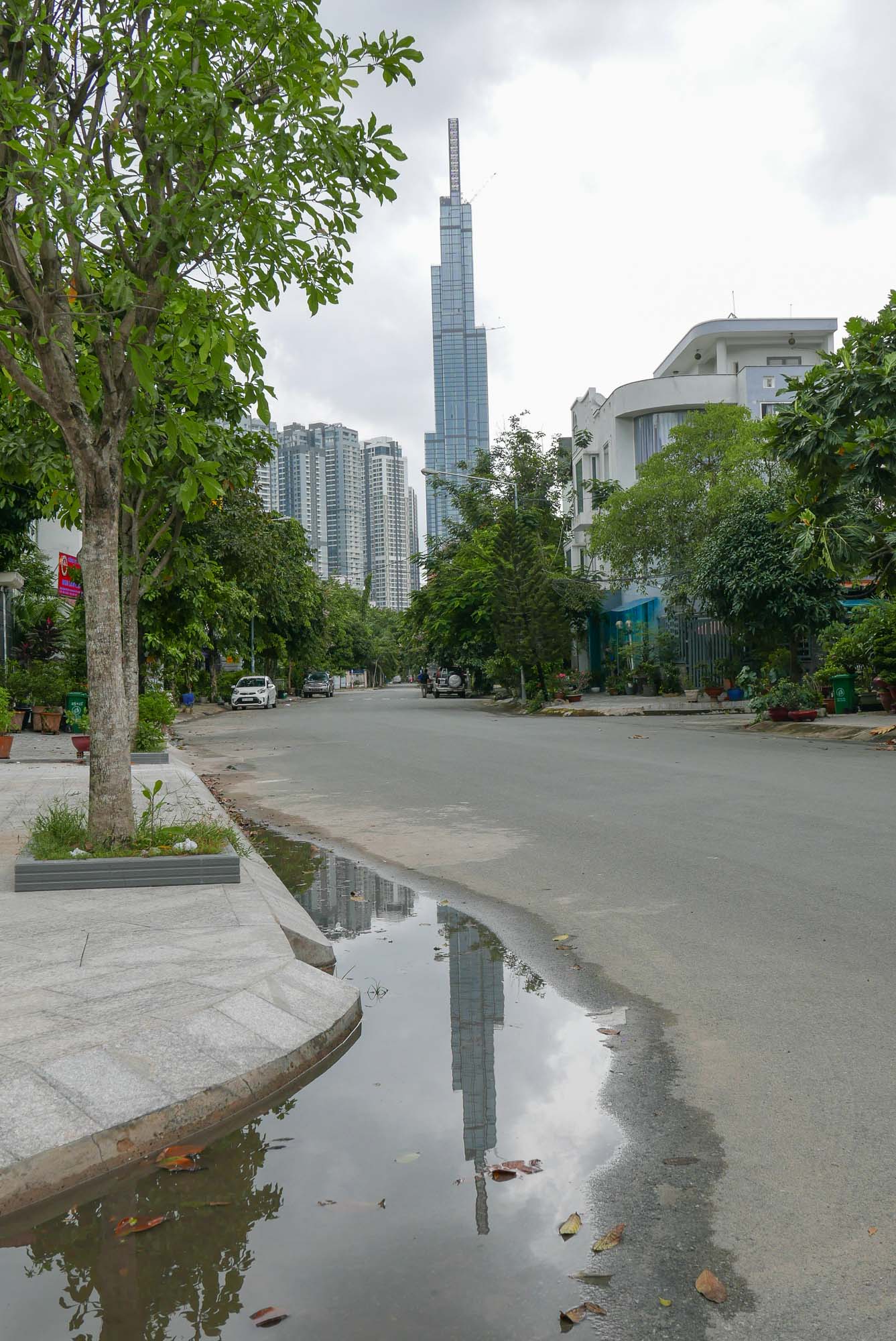
You see, the thing is travel is not just Instagram worthy sites, souvenir shopping, eating out and amazing new memories.
It’s also mozzie bites all over my body, it’s heavy rainfall every day at lunchtime, it’s dogs barking all through the night and chickens squawking at all hours, it’s workmen revving cars and moving building materials at midnight, it’s negotiating how to get to your destination when you don’t speak the local language and can’t read a Saigon map.
At one point, on my way to the office, I keyed in a local school as a landmark for the Grab driver, I thought this would be easier than putting in the address of the office. But it turns out I’d put in a different campus of the school than the one I knew was near the office, and when the Grab driver pulled up at our agreed location I had no idea where I was. My rational side knew I could just catch another Grab to get me to where I needed to be, that it was only time and money that I was potentially wasting. But for a split second I had a minor panic attack.
Fortunately the two campuses were just around the corner from each other, and the driver was able to work out where I needed to be.
Then this morning, as I tried to make myself a cup of tea, tried to fill the kettle with the ‘safe’ water just outside the back door, I realised there was a furry caterpillar hanging at head-height between me and the water cooler. I stood for a moment trying to work out a way around the caterpillar. I googled caterpillars in Vietnam to make sure it wasn’t dangerous. I stood there for 10 minutes trying to work out what to do. Now, as I’m telling you all this, I realise how ridiculous it sounds. It was only a caterpillar. But that’s the thing, when everything is so foreign, you question everything, every move.
This is all a part of the travel story too.
I know I will look back and laugh at these moments; even now I can chuckle at the caterpillar story, shake my head at the misdirections. I’m learning to read the local maps, getting familiar with what’s around me. I know my way to the local supermarket and have braved having lunch on my own.
For me, travel is all about pushing your boundaries, it’s about taking you outside your comfort zone to discover new things about yourself and the world around you. This trip is certainly managing to do all of those things.
I know I’ll look back and be thankful I said yes to this crazy opportunity. The nervousness and misgivings I felt in the beginning will be replaced by memories of the new experiences I’m yet to enjoy.
And while it’s challenging, it’s also so very worth it.
Join us on Facebook, Twitter and Instagram for more travel chatter.
11 basic things to take on your next trip to make traveling easier
Recently I filled in as guest editor for Journeys to Come, a blog by Australia’s Queen of Travel, Catriona Rowntree and one of the sections I had to provide advice on was my favourite gadget.
This got me thinking about all the random things we take when we travel, things that we don’t even think about but that make life on the road that bit easier.
My response on Journeys to Come was my Panasonic Lumix DMC-LX100 camera. I love it, it’s small enough to fit in my handbag but takes beautiful photos and 4K video. When I’m travelling with Ade, of course, I don’t need it. I let him worry about all the camera paraphernalia, but when I’m hosting tours, or travelling with family and friends and Ade’s not there (this happens fairly regularly, probably more than it should if I’m being honest.) I need something to get high quality images but that is easy to use and light to carry.
So what else do we take with us to make travel easier?
Headtorch
We both have an arlec headtorch, which always travel with us. You just never know when you’ll end up somewhere with limited power. I used it constantly in Uganda when I was volunteering. The school we stayed at only had a generator for power, which meant there was no light to cook by or to read by at night. I’ve also used it in Australia when I’ve been pitching tents and on day trips when I’ve been walking through caves.

Metal drink bottle.
Mine is a University of Melbourne drink bottle – a souvenir from my days in the corporate slog. I find water tends to stay colder in the metal drink bottle than in a plastic bottle, which is particularly handy in hot countries. I also use it during transit. Most airports now have water fountains so as soon as I’ve cleared security I look for the water fountain and fill up my bottle ready for the flight. Note: This doesn’t always work when flying into Australia, which doesn’t allow any liquids in the final departure lounge or on the planes, but it works for most other flights.
Ziplock plastic bags
This is a relatively new one for me and I got it from a client on one of my tours to Mexico. (Ade has often used ziplock bags to store his batteries so also takes credit for this one). Now I always take a few ziplock bags with me. You just never know what you might need them for. I use them to put soap in if I’ve started using it and want to take it with me – takes up less room and weight than a soap container – for snacks, and small amounts of washing powder.
Noise-cancelling headset
I have a little head so the headsets they give you on planes are uncomfortable and constantly fall off my head. But my in-ear bud noise-cancelling headset sits in perfectly. Plus, it tunes out much of the background noise on planes when I’m trying to sleep.
Ear plugs
On my last tour we stayed in the heart of Saigon. Right opposite a nightclub. It was loud. But the earplugs, which take up very little space, kept out most of the noise. Now I keep a little pouch of ear plugs, my noise cancelling headset and an eye mask with my carry on travel gear.
Rain poncho
I don’t really like umbrellas, I like to keep my hands free for photographing things, talking (yes, I sometimes talk with my hands) and well, just random things I might want to do with them. I always keep a plastic poncho in my day pack in case it rains. The poncho takes up no room and is light so it’s easy enough to carry. I have just bought a lightweight rain coat so we’ll see how that goes instead.
Notebook
I usually take a small lined Moleskin notebook, but while I’m travelling I do like to pick up notebooks in different countries. I use it to record notes about what I’ve seen, how I feel about a place, things to do in future, things people say… Anything that I find interesting, really.
Multi plug cube/double adaptor
As well as taking local adapters to be able to adapt our power plugs to local plugs we always take a double adaptor or powerboard with us. When you’re travelling you can get limited time to charge camera batteries, laptops, phones… Being able to charge more than one item at once saves a heap of time. Another trick I’ve learned is if you get two entry cards when staying in a hotel, leave one card in the power socket in the hotel room while you’re out so you can continue charging your devices. Just remember to turn off your AC and lights.
Spare Batteries
For everything. Headtorch, camera, Li ion recharge pack for phone etc. Just remember to carry Li Ion batteries on the plane with you. You can’t check them in with your luggage.
A Good Book/ Kindle
Ok, this may not actually make things easier but it does make everything better! On short trips a book is fine, but for longer trips the kindle means I can take multiple books at no extra space or weight. I read everywhere – in airports, while waiting to check in to my room, in my room, in restaurants, and sometimes while I’m waiting for Ade to finish photographing something… I always like to read a novel about the country I’m travelling through and will often buy local books when I’m on the road – because really, even when you’re travelling, you can never have enough books!
Silk Fan
I know, I know, it’s a little old-fashioned, definitely old school. It’s a complete contrast to the high tech gadgets we usually think of to make our lives easier. And maybe it’s a sign than I’m getting, ahem, older, but lately I’ve found a fan to be very useful while travelling through hot climates. I bought my most recent fan in Vietnam and it’s so easy to keep it tucked away in my bag while touring and actually does help keep me cooler.
So there you go, 11 things we take with us when we travel, all things we’ve added to our travel bags along the way to make life on the road more comfortable.
Join AllAbroad on Facebook, Twitter and Instagram for more travel chatter.
Why you really should think about travel apps before your next trip
When Ade and I first started travelling, the internet was still a fairly new concept and travel apps weren’t even on the horizon.
Back then we relied on friends, our travel agent, our Lonely Planet guide and the people we met along the way, to ensure we got the most out of our trip.
And over the years some of our favourite experiences have been the sites or activities locals and other travellers have told us about – like the time in Munich when we stood chatting to a local for about 20 minutes.
Don’t go to Hofbrauhaus, he told us, not for a meal, go to Augustiner Brewery instead. It’s far less touristy. So we did, of course, and had the time of our lives. You know you’re in for a unique experience when all information is in German and half the people at the table only speak the local language. Fortunately one lady could speak English and helped us navigate the menu – she even offered us a lift home at the end of the night.
But I digress.
Since that night almost 20 years ago our travel planning has changed significantly and the ability to source information about new destinations has exploded with the internet and mobile technology.
These days when we travel we find ourselves scouring travel blogs, looking at different experiences, studying photos to see what a place actually looks like and what we might like to do, see and photograph in a new city.
It’s no secret that planning a trip is a big part of the fun of actually taking the trip. There’s an app for just about everything in today’s digital world and the travel industry is no different. And it’s no wonder.
With travel apps you can easily search and store flights, destinations, tourist attractions, restaurants, activities; the list is endless. And getting that “insider or in the know” information is far easier in our digital world.
Did you know 48% of travellers use travel apps for GPS directions, 49% use travel apps for map features and 61% use travel apps to find restaurants?
One of our favourite travel apps is GPSmyCity, because it essentially brings all these benefits together (disclaimer: we also contribute to this app). The app allows you to follow the itineraries of your favourite travel bloggers and plots restaurants, icons, hotels – anything mentioned in a travel blog – so that you can see exactly where it is and use that information to build your own walking tour of a city.
And once you download a blog post, you can access it offline meaning you don’t need wifi or data when on the road to access the information. It’s kind of like having a lonely planet guide, detailed map, travel agent and someone “in the know” in your pocket…
With GPSmyCity you can download basic articles for free or for a small fee you can download the full version, which includes GPS coordinates to make navigating new cities even easier. (Note: we get a small percentage of download costs if you choose the full version of one of our stories.)
There are more than 1000 cities worldwide listed on the GPSmyCity app, and it’s constantly being updated by contributors, from around the world.
To help get you started with GPSmycity, because really, it’s always best to try these things for yourself, we’re offering the full version of one of our articles for free.
Check out our stories on Mexico City and Peru
Join us on Facebook, Instagram and Twitter for more travel chatter.
Braving the roads to shop in Kampala
Ever wondered what it’s like to shop in Kampala, Uganda? Is it really as chaotic as it looks in all those documentaries? In a word, yes, but it’s worth every minute…
We’re stuck.
We’ve seen busy traffic before, of course. I mean, I’ve been to India, Julie’s been to Vietnam, we know what busy roads look like.
But nothing we’ve seen can compare to this. We’re in Kampala, Uganda, the final days of our three-week trip through Uganda, a sister’s-only adventure. We came to volunteer at a school in the remote town of Buliisa, close to Lake Albert and the DRC border. But at the last minute we thought we should do some sight-seeing as well, and of course that led to us checking out the country’s capital city – Kampala. We’ve visited the Ziwa Rhinocerous Sanctuary, been on a wildlife safari at Murchison Falls, and trekked for gorillas in Bwindi Impenetrable Forest. But for some reason, instead of checking out the local tourist attractions – you know museums, galleries – we’ve decided to shop in Kampala.
And so, here we are. We look in awe as a stream of traffic passes before us, there is no room between the cars to even try to manoeuvre our way across.
Finally a man appears before us, he looks one way then the other. We watch, holding our breath while we wait to see what he does. Julie, my sister and travel companion in Uganda, quietly grabs hold of his sleeve, just below his elbow, I grab her arm and we wait. The man feels the gentle tug at his side and turns to look at us.
“Oh,” he mouths gently. “I see.”
There is a slight giggle, a nod of the head, recognition that we need his help to get across this busy street, to negotiate the traffic.
When we had first pulled into Kampala from Bwindi the previous day, we were amazed by the sheer number of cars on the road. We had driven through the back streets, trying different routes to avoid the traffic as much as possible. And now, here we are in the middle of it.
We wait for our good Samaritan, watch his every move, and when he takes off, we do too, we stick tight to his side as he guides us through the vehicles and when we get to the other side, he gives us a quick wave as we gush our thanks and he is lost to the crowds.
And all this just to go shopping. You see, we’ve figured, rightly or wrongly, that we should be able to get some good bargains in Kampala. And we really want to check out the clothes here, see what the shops are like. But we’re struggling to find anything to buy. We can’t even quite work out how to enter the shops. We’ve seen the odd bric-a-brac shop here and there, plenty of buckets and kitchen items for sale. And then, just before we had negotiated the street crossing, we had spied some clothes, hanging from the balcony on the second storey of the building opposite.
And so we made a beeline, well, a delayed beeline as we tried to negotiate the road crossing first.
When we get to the side we want to be on we search for the women’s clothing shop. Still more bric-a-brac shops. We find an entranceway, into what, we’re not really sure, and find ourselves in an atrium. There are shops around us, not women’s clothing, but shops. We walk up the stairs, tentatively, unsure whether we’re in the right place, whether we should even be in here. And then we spy the women’s clothes, hanging from the end of a corridor. There is no shop as such, just a pile of clothes at the end of the corridor, spilling out onto the balcony.
We can’t work out whether the clothes are old or new, but we don’t really care. Isn’t this part of the fun of shopping in a new country? You have no idea of the labels, no expectation, you just find what you like.
The sales assistants, two young men, are eager to help us. We are the only women in the ‘store’. We spend more than an hour trying on clothes, and the sales assistants pull out every dress they think will fit us. In the end we buy three each, they are cheap, about $4 each, and we move on.
Back out on the streets and we decide it is too much hard work to find women’s clothes. We’re happy with our purchases and so we hail a boda boda (motorcycle) and make our way to the tourist market to pick up some souvenirs.
It’s our last day in Uganda and so far, we haven’t bought any local items. We’ve been too busy volunteering or sightseeing to even think about shopping. Plus, that’s what we left these last couple of days for.
But Kampala is not an easy city to navigate. It’s big, hot, and makes no sense to us. Plus there are those roads to contend with!
When we get to the markets, we know we’ve succumbed to being tourists. But we don’t care, we are, after all, tourists here. The market stallholders call out to us as we wander around, urging us to buy in their shops, asking us what we are looking for. But they aren’t aggressive and often, their comments are almost half-hearted.
We buy a couple of trinkets, some soapstone animals, and head back to the hotel in time for dinner. On the back of a boda boda, of course. Now that we’ve learned to cross the roads, we can brave just about anything.
Kampala – Fast Facts
We stayed at Villa Kololo, a beautiful hotel that felt like it was tacked on to a lovely restaurant.
We were here for two nights.
Was it long enough? We were here to volunteer in Buliisa so weren’t really worried about spending too much time in Kampala. Uganda is a stunning country, so it’s worth exploring, but two nights in Kampala was long enough.
Highlights: The people! Uganda is one of the friendliest countries we’ve ever visited. The people watching, it’s fascinating – so many people all in one city, it’s chaotic, it’s exhausting but somehow it all works.
Read more about travelling in Africa by visiting our Africa hub here.
Join us on Facebook, Instagram and Twitter for more travel chatter.
Why you really should add Belfast to your ‘must see’ list
Belfast has shaken off it’s troubled past to emerge as a cosmopolitan city worthy of any trip to Europe. In the latest in our You’ve Been Where series, guest writer Corrina Langelaan takes us on a tour of the gritty, vibrant and very colourful city of Belfast. And now we’re adding this to our ‘must see’ list…
Who are you and what do you do for a living?
Corrina Langelaan
I work in communications and marketing for a university

Where is home?
Home is North Melbourne. I love it, as it is just outside the CBD, but still has a real community feel.
Where have you been? When did you go?
I lived in Europe for 10 years and it really changed my life. In 2017, I had an – ahem – significant birthday and decided to return to some of my old haunts. One of these was Belfast in Northern Ireland.
Who did you travel with?
Me, myself and I! I cheated though. Having lived in the city previously, I still have local friends who were keen to show me how Belfast had changed.
What were the highlights of your trip?
Travel guides often refer to Belfast as gritty and colourful. They’re not wrong; the city has a troubled history that still influences its people and society (I strongly recommend avoiding conversations about local politics or religion). However, what I really noticed this trip is that Belfast seems more vibrant, prosperous and…more cosmopolitan. It’s like the city is finally comfortable with its reputation as an up and coming European destination. And, interestingly, Northern Ireland voted against Brexit.
Particular highlights include the Titanic Museum. It’s a museum, but not like any I’ve experienced before. It’s almost completely interactive and showcases, not just how the Titanic was built, but how the city of Belfast grew with it. Even if you have no interest in ships, and I freely include myself in that category, it’s an amazing way to spend a few hours.
Part of the rich tradition of Belfast is reflected in its murals. Once upon a time, they were a clear reflection of a troubled past. Now the next generation of artists are reclaiming the walls and new, ever changing murals are all over the city. A friend took me for a two-hour wander through the city centre and even she was surprised at the new works that were popping up.
If you’re a first-time visitor, the black taxi tours are also an interesting way to learn more about the Troubles, a period of history that still influences Northern Ireland today. The taxi drivers come from both sides of the community and can be hard to understand at times (it’s a thick brogue) so don’t be afraid to ask them to slow down!
What did you least like about your trip?
Belfast can be tricky on the weather front. Given its northern location, it’s always a few degrees colder than the Republic of Ireland and other parts of the United Kingdom. Even if you’re going in Spring or Summer, I’d pack a light jumper.
Public transport remains an issue. Taxi’s aren’t very expensive and Uber has entered the market, but you need to be organised about your day trips, as trains and buses aren’t as frequent as a traveller would like. My advice is to have city centre accommodation if you can.
What were the locals like?
As anyone will tell you, people in Northern Ireland will ‘give you the shirts off their back…’ and I’ve been on a few nights out in Belfast where that has literally happened. But that’s a story for another day.
People in Belfast are generous, warm and have a real pride in their city. If you show the slightest bit of interest, they will share stories and give you loads of tourist recommendations, which you should follow if you have the time.
As a single woman, I was chatted up a few times on this trip. When I lived there, the men of Belfast waited until they’d had a few – or many – before approaching the female species.
This time was different. I don’t know if it was the perfume I was wearing, but a number of Belfast’s most charming made an approach when I was out and about, and not always with numerous pints under their belts! And for those of you from my neck of the woods, they love Aussies.
What was the food like?
Wow, Belfast, you’ve become hipster in my absence! Among the culinary wins is decent coffee, which really made my trip. Step up Established Coffee near St Anne’s Square and Kaffe O (branches in Ormeau Road, Botanic and Donegall Square North). The coffee was Melbourne worthy, which is no mean feat.
St Anne’s Square and the Cathedral Quarter are where many new eating places are. Friends took me for Mexican at La Taqueria. It’s amazing, but hidden behind a shopping street, so look it up first. For fine dining, go to Ox. You won’t regret it and apparently it has an affordable lunch menu. I never go past Mourne Seafood, as its menu is amazing and the seafood incredibly fresh.
My friends tell me that Northern Ireland is unique for both the high number of teetotallers and those who enjoy a pint…or 10. It seems the latter are winning, as a number of new pubs and bars have sprung up over the past five years.
I did visit some of the newer efforts, but found myself back at my old favourites; the Duke of York (where you’ll always find locals), The Spaniard, Muriel’s and The John Hewitt, which is a social enterprise, so you know your pint is going to a good place! They’re all within spitting distance of each other, so you can have yourself a decent pub crawl.
One thing to note is that Belfast is trying its hand at beer gardens, which it frankly doesn’t have the weather for. If it’s really warm though, it might be worth visiting The Dirty Onion…and yes, it really is called that.
St George’s Market in the city centre is open every weekend and I highly recommend it. You can get cool little gifts; the food and coffee are great and well-priced. It feels like all of Belfast is there as it can get pretty crowded, but it’s fun and the buskers are generally entertaining. It’s in an old hall and always cold, so wrap up before you go.
If fiddle dee dee music is your thing, the Garrick just off Donegall Square, does a Sunday afternoon session. It also has all the ye olde wood panelling and traditional pub grub that you want from a proper Irish pub.
Did you learn anything about yourself or the world on this trip?
I wonder if it’s the fact that I’m older now, but to me, the city seems happy and more prosperous. Don’t get me wrong, my friends are still a cynical lot (and if you know anything about the local political scene, they have every right) but there is an air of vibrancy that’s pretty infectious.
Would you recommend others travel here?
Yes, yes, yes! When I went back, I remembered all the reasons I loved living in Belfast. It’s easy to get around, the people are warm and friendly. It has a rich history, great food and is well priced for the budget traveller. You won’t be bored. Make it one of your European stops.
Do you have any tips for people thinking of travelling here?
While a place I really love, there is no denying there is still underlying tension in Northern Ireland. July is a real no go zone. The 12th July is a ‘celebration’ of the Battle of the Boyne, where the Protestant King William of Orange once defeated the deposed Catholic King James II. There are parades to mark the occasion and it can get really nasty. Plus, many people in Northern Ireland use it as an excuse to go on their summer holidays, meaning that restaurants, bars and tourist destinations are closed, or really quiet.
Northern Ireland is part of the United Kingdom. Half the population are happy with this state of affairs, half are not. Its fraught with difficulties and be really, really careful if you choose it as a conversational topic.
As an aside, Northern Irish pounds are legal tender throughout the UK, but other parts of the country can get funny when you try to use them. My tip is to spend all your pounds, or make sure you swap your local pounds for English versions before you leave. The banks will generally do this for you.
Belfast is also referred to in Quarters – the Cathedral Quarter, the Titanic Quarter, Queen’s Quarter and Gaeltacht Quarter. Most people will send you to the Cathedral Quarter (as this is where most cultural events take place and it has many bars and restaurants) and the Titanic Quarter, which houses the museum.
Queen’s Quarter is South Belfast and refers to the University section of the city. Gaeltacht is to the west and where the Irish language is particularly promoted.
Oh and, don’t forget, the Titanic was a major feat in engineering and perfectly sound when she left the Belfast shipyard. ‘Twas the iceberg and English captain what did her in!
Been somewhere lately? We’d love to share your travel tales in our You’ve Been Where section. Drop us a line or leave us a comment below.
Join us for more travel chatter on Facebook, Instagram and Twitter.
Searching for quokkas on Rottnest Island
Our first sighting of a quokka comes early, really early. We’d taken the first boat from Hilary’s Boathouse on mainland Western Australia to Rottnest Island and no sooner are we off the boat, than we spy this native hanging around the Tourist Information centre.
Our second sighting of a quokka comes as we walk the short distance to the Bathurst Lighthouse.
We’ve opted to walk, even though we’ve bought a bus pass for the day, it’s just a short meander through the small town on Rottnest Island to the lighthouse. We’re really walking toward The Basin for some snorkelling, but we’re side-tracked by glimpses of the lighthouse and so we stop to take in the views of the ocean, the green rolling hills of the island and the water, so blue it’s mesmerising.
But we’re here with family – Ade’s sister and brother and their partners, mother and father and our niece and nephew – and they all just want to get to the beach. They’ve had enough of exploring, “can’t we just swim?” they cry. And so we relent and make our way to the beach. The sky is blue and while the renowned heat of the Australian sun hasn’t yet begun to bite, we’re expecting rain and windstorms in the afternoon – not good conditions for snorkelling – so we move quickly into the water.
It’s packed. Holidaymakers from all over the world have had the same idea as us; swim this morning, while the weather is good. But even with all these people the water remains clear, the fish circle. Unperturbed by our presence in their home, they brush gingerly against our bodies. Needless to say the snorkelling is excellent.
If you like this post you might also like to read about Ade’s four-wheel drive adventure through Western Australia here.
We snorkel for about an hour. But there is still a lot more to see on this island and so we make our way to the closest bus stop, which just happens to be at Geordie Bay, right next to Geordie’s Café and Art Gallery and we figure that must be a sign. We should eat lunch while we’re here. After all, we’ve only got a day on the island and we want to see as much as we can.
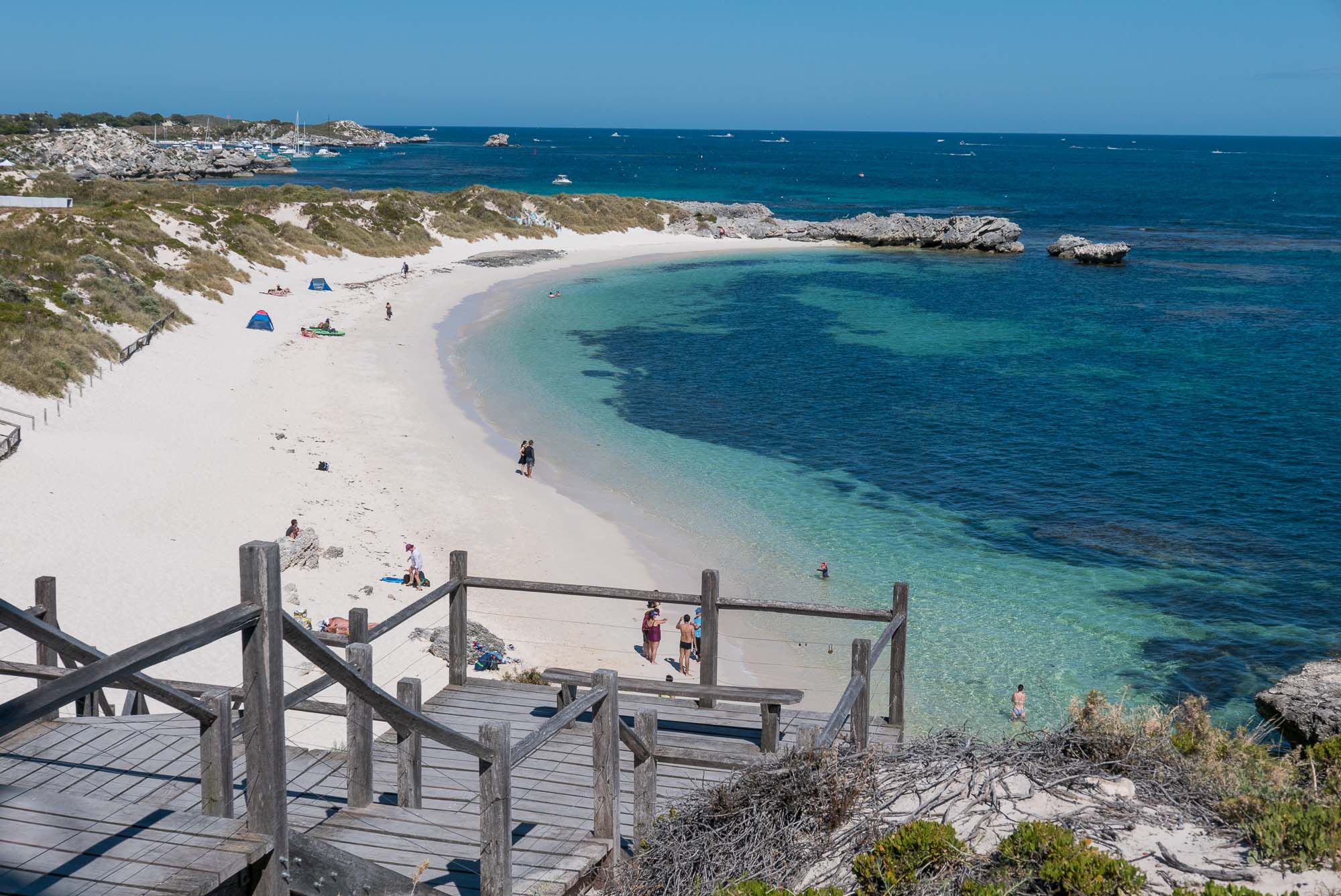
The first time we came to Western Australia we never made it to Rottnest Island, try as I might I can’t work out why we skipped this part of the state. I remember hearing mixed reviews about it, that’s it’s not as beautiful as it looks in the brochures, that there’s nothing to do, that it’s really just about the quokkas. Now if you’ve read much of our blog, you’ve probably figured out that we like most places, and it’s true, we do try to see the beauty, the interesting or the unusual wherever we are.
But believe me when I tell you all those people were wrong. Rottnest Island is stunning. The beaches boast the kind of powdery white sands and aquamarine blue oceans that you expect to see on an island paradise. You know, the kind on every beach resort brochure? The photos of which you secretly suspect may be photo shopped? They’re the kind of beaches we’ve found on Rottnest Island.
So here we are immersed in our own island paradise (and when I say ‘own’ I mean us and tens of thousands of other tourists of course). After a quick lunch, we find the bus stop and board the bus, some of our group want to do more snorkelling so get off at Porpoise Bay where the beaches are just as stunning as those on the other side of the island, where we were in the morning.
But of course, Ade and I want to explore the island. We want to see as much of it as we possibly can. His mum and dad and our niece come with us. Our first stop is the Wadjemup Lighthouse. And on the way we pass more quokkas, they line the street almost like English subjects waiting for the passing of a member of the Royal family. We stop, of course, because we’re still trying to get that perfect shot of a quokka.
Located in the centre of the island the lighthouse is at the highest point on Rottnest with views across the island and out to the waters. It’s a short stop for us, because there is still far more to see. We’re determined to make it to Cape Vlamingh, the western most tip of the island, to venture along the boardwalk in search of local seals and other native wildlife.
Want to read more about Australian beaches? You might like this story on Di’s adventures on the Great Ocean Road
And so we make our way back to the main road and the bus stop. And we wait. And wait. A bus comes past but is too full to pick us up. Another one comes past. By now the Western Australian sun is at it’s hottest. There is no shade and no other way to move around the island. We watch longingly as people glide past on bikes wishing that we could have hired our own, but knowing too that it wasn’t feasible with 10 of us.
My sister-in-law had warned us that this would be the busiest weekend of the year on Rottnest, it’s the Saturday before New Year’s Eve and Rottnest hosts a big party at this time of the year. There are those staying over night, day-trippers like us who have caught a ferry across, those who have come by seaplane and others too who have come by private boat.
The island’s bus service simply can’t cope with this many tourists*.
Finally another bus comes and we manage to squeeze on. But our driver tells us that we won’t be stopping at the one stop Ade and I really want to visit. And now we’re too nervous to get off at another stop for fear we won’t be able to get onto another bus.
Instead we make our way back to the main township – Thomson Bay Settlement – and explore the buildings. It’s a quaint centre, with a few shops, a museum, a local church, a youth hostel and some holiday cabins
British settlers formed the settlement at Swan River Colony in 1829. Over time it has been a penal colony, a military post and an internment camp for ‘enemy aliens’ during World War 1 and World War 2. Between 1838 and 1931 Rottnest was used as a prison for Indigenous Australians.
Want to see more of Australia? You might like our post on Fraser Island.
Despite this sad history, on the day we visit the township is bustling with people, happy travellers from all over the world. Many of the original buildings have been turned into tourist accommodation. We make a mental note to stay on the island next time we come, to give ourselves time to truly explore the natural beauty of the island.
Oh, and there are quokkas, lots of quokkas! Plenty of opportunities for that quokka selfie!
*Rottnest Island Authority gave us a refund on our bus tickets.
Rottnest Island – Fast Facts
We spent a day on Rottnest Island
Was it long enough? NO. Next time I would book a cabin (in low season) and stay a couple of days. I’d spend more time exploring the island and snorkelling in those beautiful waters.
Highlights: Snorkelling off the beach at The Basin, the quokkas!
Tip: If you are able bodied, hire a bike, you’ll get to see far more and have more freedom for your day.
Join All Abroad on Facebook, Instagram and Twitter for more travel chatter.
Finding stillness on a cruise in Ha Long Bay
It’s 6am and already I’m standing on top of a boat, a houseboat, in Ha Long Bay. Around me the boats are just waking up, lights slowly coming on as those on board peer out the windows at the jaw-dropping scenery around them.
It’s one of those “pinch yourself “kind of moments. You know the kind, you’ve seen picture after picture of this land formation, one of the jewels of tourism in Vietnam, and wondered when you’d actually get there, when you’d get to see it for yourself.
Wondered too whether what you saw in the pictures is actually what you’ll find or whether boats and tourists have overrun the place.
I look around at the mountains of limestone rising out of the ocean. Mist, or is it smog, rests over the bay giving it a dreamy atmosphere. But I don’t have long to take in the scenery, to breath in the fresh, still air. No sooner have I said good morning to my tour group than our instructor turns up. We’ve all gathered on top of the boat to learn tai chi. As if sleeping on a boat in the middle of a UNESCO Heritage listed wonderland isn’t enough relaxation, we’ve pulled ourselves from the soft cotton sheets to learn a new skill, some new moves.
Our guide switches on his iPod, giving us music to move to, across the water I see a couple look over at us from the top deck of their boat. But soon I’m immersed in the free-flowing movements, mirroring – or at least trying to mirror – our instructor.
The Tai Chi lasts for about 45 minutes. If the idea is to get lost in the movement, it doesn’t work, but how could it with the views that surround us?
We had arrived at Ha Long Bay from Hanoi just a day earlier and boarded our ‘Junk’ in time for a seafood lunch.
After lunch we visited Ti Top Island. It was crowded when we turned up. The tourists have taken to Ha Long Bay in their droves but I’m not complaining, we’re among those tourists fighting for our spot on the small island. We joined the throng and walked up to the lookout. It’s about 400 steps straight up and from the top are 360 degree views of the Bay – we could see the boats, almost 100 of them in the small area approved for boats by the Vietnamese Government and beyond that, the quiet protected area of the bay where tourist boats are not allowed to venture.

When we first boarded our junk there were hundreds of boats all making their way into Ha Long Bay, but it wasn’t long before we forgot they were there, found ourselves traversing the waters seemingly on our own. But at the top of Tip Top Island we’re reminded of the volume of boats sharing this experience with us.
Ha Long Bay encompasses an area of about 1555km2 off the north east coast Vietnam. It consists of almost 2000 islets, most of which are limestone. The limestone has formed over about 500 million years and the karsts (eroded limestone) shaped from 20 million years of tropical weather conditions.
After we’ve had our fill of those spectacular views, we make our way down to the beach. It’s crowded and nets not far from the shore restrict the swimming area. Only one of my group decides to swim, the rest of us agree it’s far too cold.
Back to our boat, for a seafood dinner and then our guide starts up the karaoke machine, we sing and dance our way into the night. Between songs, in our quieter moments, we can hear music from the boats around us, all revelling in their own Ha Long moments.
But back to Tai chi. When I awoke this morning I looked out my window at the sheer cliffs of the islets around us. All so still and quiet. The perfect location for a Tai Chi lesson. That was before I considered how distracting new and novel the views are. Still, we made it through the session, got our bodies moving and tried something different, and isn’t that what travel is all about after all? Trying new things?
After Tai Chi we head to Sung Sot (Surprise) Caves, and they are indeed surprising. A large cavern full of stalactites and stalagmites inside awaits us. We wind our way through the caverns, three in all, each bigger than the one before, as our guide points out interesting shapes in the land formation.
Vietnam can feel hectic, chaotic, but here on Ha Long Bay, despite the volume of boats and tourists, we get a respite from that busyness. It has provided us with a moment of calm before we once again face the frenetic pace of Hanoi.
Cruising on Ha Long Bay – Fast Facts
We travelled with Bai Tho Junk. (Don’t be fooled by the word Junk, in one of the junk boats I’ve stayed on we had heated toilet seats!)
We were here for one night.
Was it long enough? It was nice and relaxing on the boat, but one night was long enough to check out the main sites. As always, more time would give you the freedom to explore further.
Highlights: Relaxing! Surprise Caves was fascinating, but really just looking at the interesting land formations throughout the bay was stunning. Oh, and the karaoke of course.
*This trip was part of a tour I hosted with Australian solo travel company Two’s a Crowd. We travelled with Buffalo Tours.
Join us on Facebook, Instagram and Twitter for more travel chatter.
Stillness and stunning scenery come together on a yoga retreat in Napier
The beauty of New Zealand combined with the tranquility and zen of yoga, is it just us or does this sound like heaven? In the latest post in our You’ve Been Where series, guest writer Jacinta Cubis learns how to slow down and create some space on a yoga retreat in Napier. Ommmm…
Who are you and what do you do for a living?
Jacinta Cubis. I’m a freelance facilitator, engagement practitioner and partnership broker. Three fancy words to describe the deceptively simple job of helping organisations have conversations with their partners, communities and stakeholders. ‘Facilitate’ means to ‘make easy’ – make it easier for people to explore ideas, build on opportunities and work through problems.

Where is home?
The hidden gem of Clifton Hill, Melbourne. River and bushland, beautiful gardens, a quiet oasis that’s a hop, skip and jump from Smith and Brunswick Streets. Walking distance from the city or a quick bike ride. Spoiled with public transport choices.
Where have you been? When did you go?
Napier, Hawke’s Bay, New Zealand, for three weeks from Boxing Day to mid-January, 2018.
Who did you travel with?
My yoga buddy, Jane. Our fellas joined us for six days, about halfway through our yoga workshop. Our early morning yoga routine didn’t seem to interfere that much with them having a mini-break. They seemed to get on well with our new yoga friends and were pleasantly surprised that they could share a glass of wine with a few. They passed on trying yoga though.
What were the highlights of your trip?
The intensive workshop over 16 days with Peter Sanson. He’s a very compassionate Ashtanga Yoga teacher. I fluked getting a 7am spot in his very popular workshop. People came from Norway, Austria, Alaska, Chicago, Japan, Taiwan, Spain to work with him. Anyone visiting Napier with an interest in yoga should look him up. He’s world renowned and now I know why.
Napier’s architecture – both the celebrated art deco buildings and the white-weatherboard mansions and laneways on Bluff Hill. When you’re looking at the art deco, look up, above the shopfronts and go inside any building you can – even if it’s being used by banks or businesses. That was often the best part of immersing yourself in the architecture. And great to see that these buildings remain practical for today’s working environment.
Riding everywhere – through the centre of the ‘city’ early in the morning to the yoga studio, to 34 km round trips along smooth sandy tracks past apple orchards, cows and rivers.
The wine! The farmers markets! The op shops! Napier seems to have the best op shops. I’m loving my b/w polka dotted pants.
What did you least like about your trip?
The unseasonably icy wind and cold temperatures of our first four days. Napier locals were as shocked as we were. It didn’t last and I guess it gave me a taste of what winter would be like, if and when I come back for a yoga workshop at that time of year.
I was a bit disappointed that I couldn’t really swim off Napier’s main beach. The water is such a beautiful colour. It looks like the effects of the earthquake still resonate. The waves are really ‘bitey’ most of the time – you’d get dumped. So I dipped into the water after the port with everyone else. Nice to get wet, but you have to get out of Napier if you want a real beach experience.
Do you have any funny stories from your travels?
Plenty, but ‘you had to be there’.
What were the locals like?
Friendly! Relaxed. Content.
I guess the friendliness comes with staying in one place over three weeks. You do get to know the baristas. But from day one, the workers who cleaned the streets every morning were up for a chat, especially the woman with the red ear muffs. And the kind woman at the recycle shop who offered to give Jane’s mum something warm to wear until her baggage turned up (it never did).
What was the food like?
Delicious fresh seasonal fruit and vegies from the road-side stalls on the way to Waipatiki Beach and in Hastings.
Delectable snapper, scallops and mussels from the wholesale seafood coop – a lovely bike ride around the Port to West Quay. We had takeaway and returned regularly to buy for our nightly BBQs.
The nectarines, apples and fresh bread from the Saturday farmer’s market never lasted long.
And the wine – did I mention the wine? Buttery chardonnay, pinot grigio and pinot noir…..
Did you learn anything about yourself or the world on this trip?
The value of creating spa_____ace (as per the image) in your body, your life, your routine. I reckon I learnt something about stillness, acceptance, contentment and to try to be ‘not so speedy’ from the combination of yoga, Napier and staying in one place. I’m constantly learning about myself and the world in yoga, but there’s just not enough room in this blog to even start on that.
Would you recommend others travel here? Why
Absolutely! If you can’t stay for as long as I did, certainly try to stay for four or five days.
Because it’s a lovely taste of NZ. You can experience so much of the diversity of NZ from the one base of Napier. It feels like a regional town, with the buzz and sophistication of a larger city. Worth the art deco alone, but you can do and see so much more. On a bike, by foot, by bus or hire car. Beaches, hilly walks, vineyards, fun drives in manual cars (got to be a manual) on long, windy roads. Or you can just stay in Napier and walk around everyday to find some new part of town, some new aspect of the art deco story, the town’s history or culture.
Do you have any tips for people thinking of travelling here?
- Have lunch at Clearview Winery. We were all delighted with our food and wine and the atmosphere was cosy, service excellent and wine tasting fun.
- Go to one of the roadside fresh fruit stalls hungry so you can indulge in a fresh fruit ice cream. A NZ invention I believe.
- Do the longer art deco walking tour. It’s worth it. Do stay to watch the film after – it’s not twee or daggy. The volunteer guides are fonts of knowledge.
- Visit the botanic gardens and the cemetery. Take a picnic. Everyone else seems to be by the water.
- Hire a bike from Fish Bikes – great selection of decent bikes, they’ll negotiate the price for longer hires and they’re a good crew too.
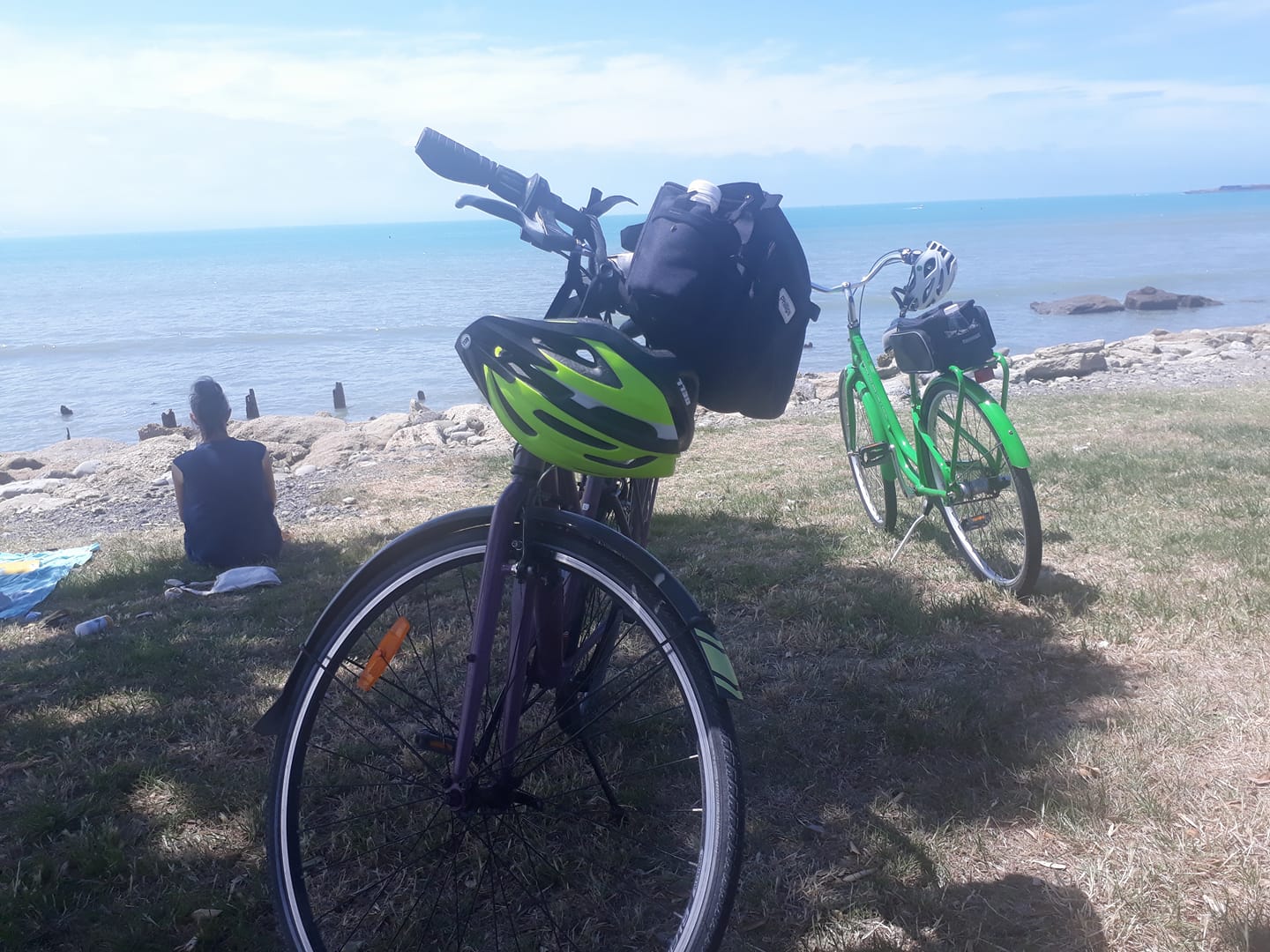
- Walk up to and around Bluff Hill. Let yourself get lost – all roads end at the Port.
- Ride to West Quay by the Port – you don’t need to ride over Bluff Hill (a toughie on a limited gear step through bike).
- Drink coffee at Georgia’s on Tennyson, the Hapi on Hastings St. I tried most of the cafes and these two were the best. One other café has AllPress coffee, but the skill is in the barita, isn’t it?
- Our friends went to see the gannets at Cape Kidnappers on tractors at sunset. Apparently a ‘very kiwi thing to do’. On my list for next time.
- Fresh seafood and fish n chips from Hawk’s Bay Seafood in West Quay. A local told us to go somewhere else but my taxi driver reckoned our choice had a bigger selection and more turnover, so always fresh. We were happy.
- Do spend time in the HUGE supermarkets. Sounds boring, but the selection of wine, nuts and pulses on offer was staggering. We got our organic muesli there for about 1/3 of the price in the organic store in town – same brand.
- Quotidian, but get a key and use the laundromat. Another NZ innovation that’s coming to Australia soon.
- If you like gin, seek out one local brew called Juno, from, aptly enough, New Plymouth. This was the best thing we had at the Gin Trap, but I’d stop there in terms of drinks or food.
- We had mixed dining experiences – we just loved our home BBQs. Suited our budget and our lifestyle. However, we enjoyed good meals or takeaway from Rasoi Cuisine Of India, Kilim & Thai Hutt – we missed out on trying Hunger Monger, which we heard good things about. Brekki at Chantal’s was great, but have your coffee around the corner at Georgia’s.
Been somewhere recently? We’d love to hear about it. Drop us a line at allabroadau(@)gmail.com.
Join AllAbroadAU on Facebook, Twitter and Instagram for more travel chatter.
